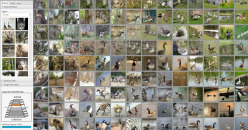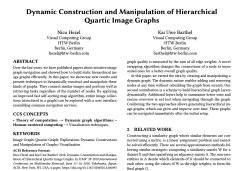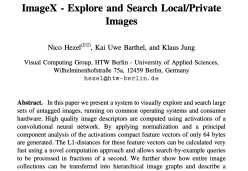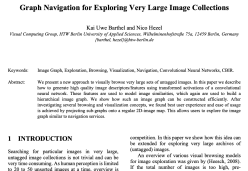
ImageX
Download x64bit Version:
Windows 10 x64 (for old hardware)
Mac OS X 10.13 High Sierra
Key Features
Intuitive Image Navigation: ImageX transforms your photo collection into an interactive map, allowing you to explore images as if you were navigating a digital map. This makes finding specific photos easy and engaging, even in large collections.
Powerful Visual Exploration: Using advanced neural networks, ImageX analyzes and connects similar images, creating a visual graph of your collection. This allows you to quickly find related images by simply exploring the connections, without needing to know exact file names or dates.
Keyword Search Without Tags: ImageX lets you search your images using keywords, even if your photos don't have tags or descriptions. The software analyzes the visual content of your images using machine learning, allowing you to find relevant images based on their actual content.
Cross-Platform Compatibility: ImageX runs seamlessly on all major operating systems, making it accessible on any device you own. Whether you use Windows and Mac, you can enjoy the same powerful features without any additional setup.
How to Use ImageX?
To use ImageX, start by selecting the folder containing your images. The software will automatically analyze and organize your collection into a visual map. You can navigate this map to explore related images or use the keyword search to find specific photos without needing tags. Images with similar content are connected, making it easy to discover related photos. Finally, zoom in and click on images to view them in detail or to perform further actions like organizing or sharing.
How Does ImageX Work?
ImageX operates by first analyzing the visual content of each image in your collection using advanced convolutional neural networks (CNNs). These networks extract deep features from the images, which are then compressed into 64-dimensional feature vectors for efficient storage and comparison. In addition to these machine-generated features, ImageX calculates handcrafted feature vectors that include color histograms, structural patterns, and overall color distribution. The images are then connected in a hierarchical image graph, linking those with similar visual content. This graph structure allows for efficient searching and navigation, with similar images grouped together.
For visual exploration, parts of the image graph are projected onto a 2D grid using a custom variant of the Self-Organizing Map (SOM) algorithm. This projection helps create an intuitive, map-like interface where users can easily explore related images. The keyword search function leverages the Habit technique, where visual features are linked to a vast database of 20,000 common keywords. This allows users to search for images using natural language without needing pre-existing tags. All processing, from feature extraction to graph creation, is done locally on your device, ensuring privacy and security.



